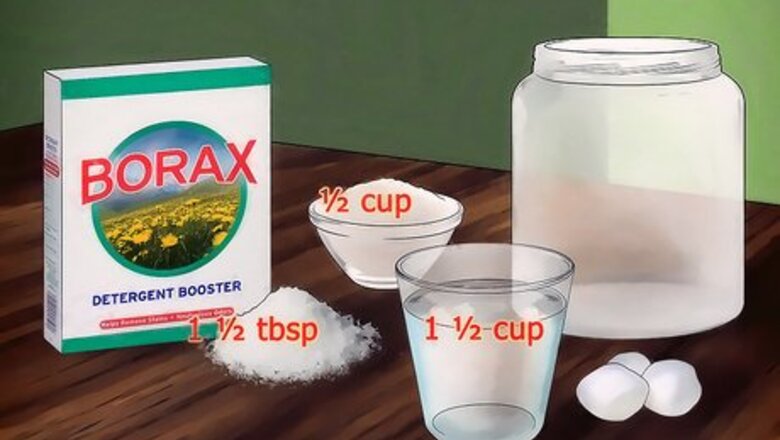
views
Killing Ants Using Borax and Sugar Water
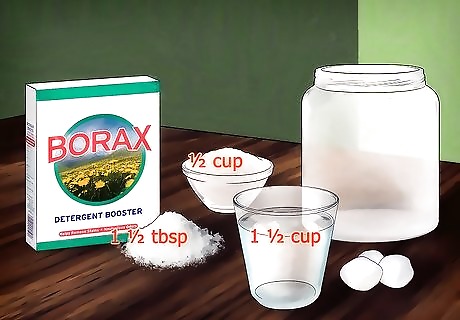
Gather your supplies. You will be making a liquid solution using borax, sugar, and water, and then soaking cotton balls into this solution. Here is what you will need: ½ cup (100 grams) of sugar 1 ½ tablespoons borax 1 ½ cups (350 milliliters) warm water A jar Cotton balls Shallow dishes, small containers, or lids (optional)

Pour the sugar and borax into the jar. The borax is what will kill the ants, and the sugar is what will attract them to the borax. Ants don't see borax as a food source, so they won't come near it—the sugar will be an effective bait.
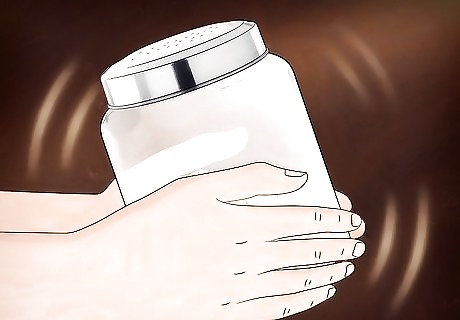
Close the jar and shake it. You are doing this to mix the borax and sugar together.

Open the jar and add the water. You can use any temperature water, but warm water will help the sugar and borax dissolve better. The water will turn the borax and sugar into a liquid solution, which will make it easier for you to dip the cotton balls into.
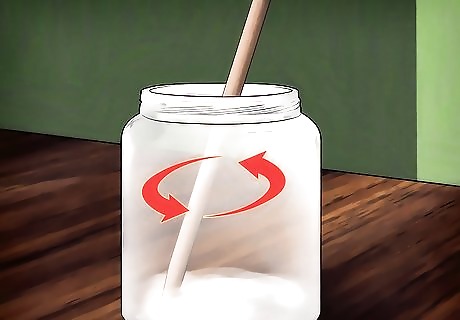
Mix everything with a spoon, fork, or stick. Keep stirring until all of the sugar and borax are dissolved—or at least most of it.
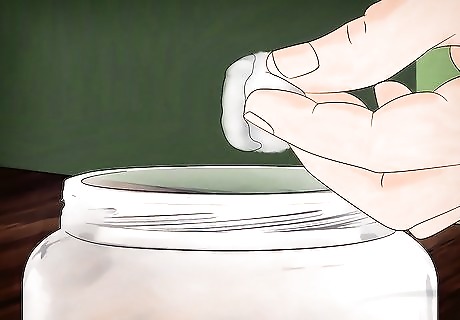
Soak cotton balls in the solution. How many cotton balls you use will depend on how bad the ant infestation is. If you have any of the solution left over, you can save it simply by putting the lid back on the jar and storing it in a cool, dry place.
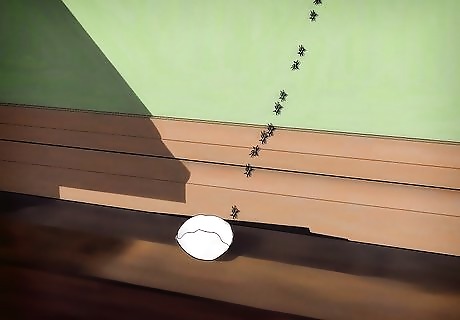
Start setting out the soaked cotton balls. Focus on the ant trails; you want to place the cotton ball right onto the trail itself. If you can find where the ants are coming from, you can set the soaked cotton balls near there. This will help them find the poison even sooner. If you don't want to get your floors or window ledges dirty and sticky, you can place the soaked cotton ball in a small container first, and then set the container out. You can also use a shallow dish or a jar lid. Whatever container you chose to use, make sure that you don't use it for food purposes again. Borax is very toxic to humans and pets as well.
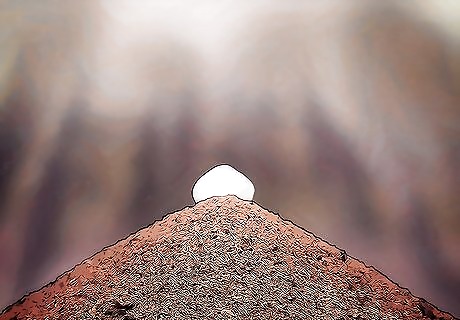
Consider blocking the ant nest. If you have located the hole where the ants are coming from, you can seal it with some epoxy putty or sealing paste. This will prevent the ants from coming back. Do this after you have killed all of the ants, and not before.
Killing the Rest of the Colony
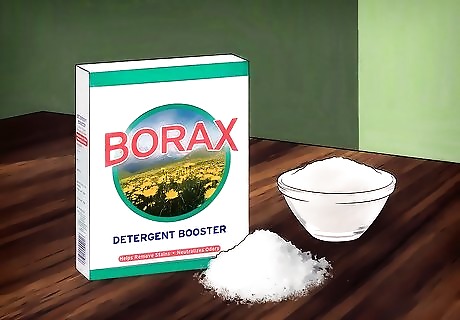
Gather your ingredients. You will need two simple ingredients: borax and sugar. Adult ants won't eat the solid poison, but they will take it back to the colony for the larva to eat.
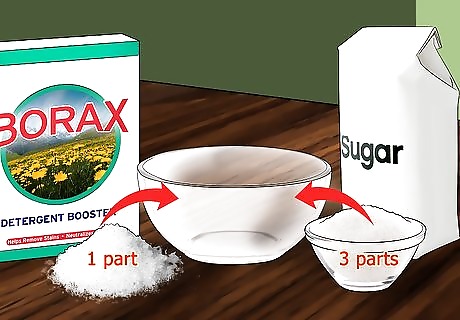
Mix three parts sugar and one part borax. Pour the borax and sugar into a container and stir it with a spoon or fork until everything is combined. How much borax and sugar you use will depend on how bad your ant problem is. Be sure that you use the one part borax and three parts sugar ratio. Make sure that you won't be using the container or utensil again for cooking or eating.
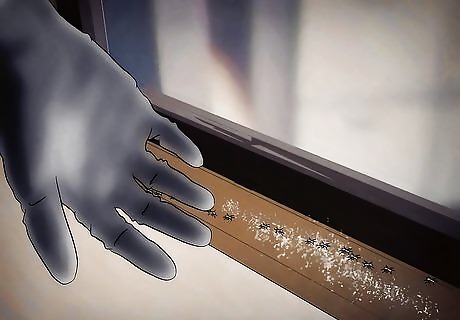
Sprinkle the powder across the ant trail. If the ants are entering your house through the windows and doors, sprinkle the powder across the doorway and on the window ledge. Make sure you spread the borax thin rather than putting in large piles, or else the ants will try to avoid it. The ants will pick up the powder and carry it back to the hive for the larva to eat. The borax in the powder will kill the larva. Alternatively, you can use a small puffer or duster to coat surfaces with borax so ants are less likely to see and avoid it.
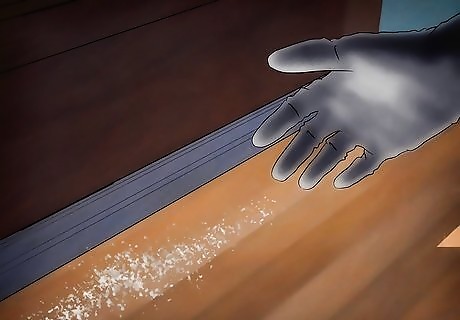
Sprinkle the powder across potential entry ways. While you are trying to manage the ant problem, it might be a good idea to block off any other potential entry ways, such as doors and windows. This will prevent the ants from finding other ways into your home while you are trying to kill them.
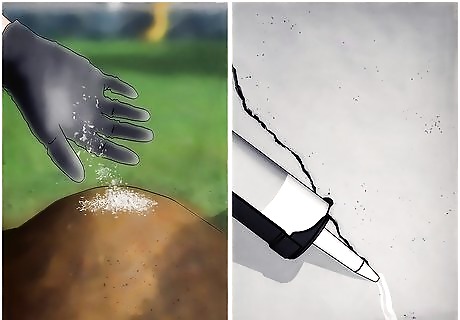
Consider blocking the ant nest. If you can see where the ants are coming from, then you can plug the hole up with some epoxy putty or other sealant. This will prevent the ants from coming back in. Do this after you have killed all of the ants, and not before.
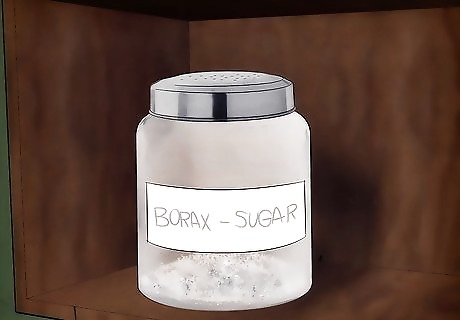
Store any unused ant killer properly. If you have anything left over, put it in a tightly-sealed container and label it. Make sure that you put it in a place where children and pets won't be able to reach. Borax is very toxic, even to humans and animals.










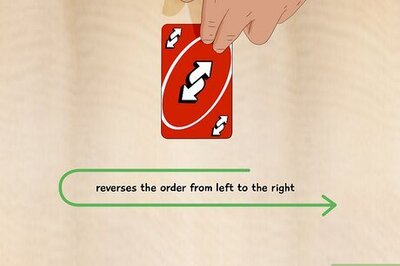





Comments
0 comment